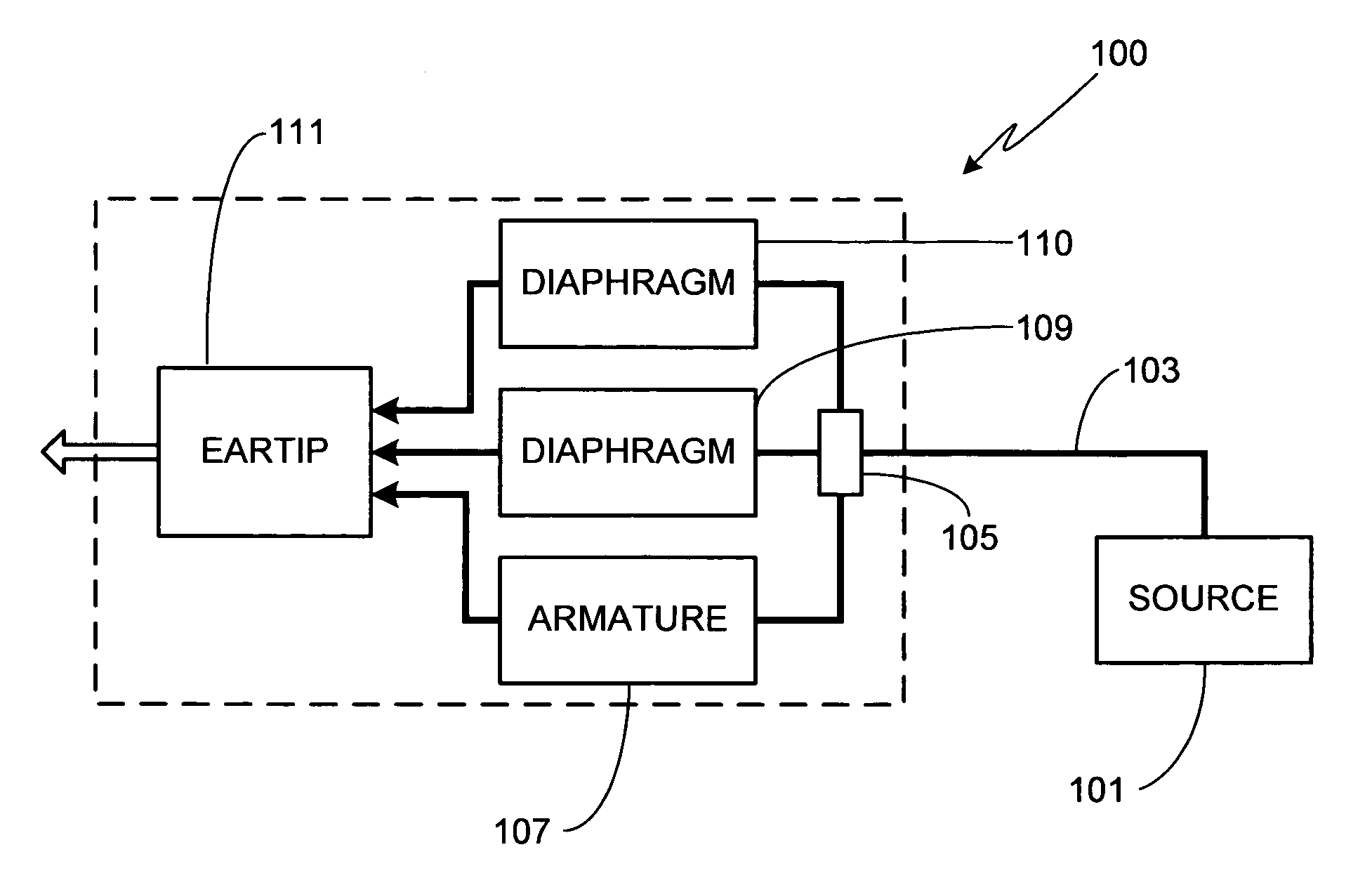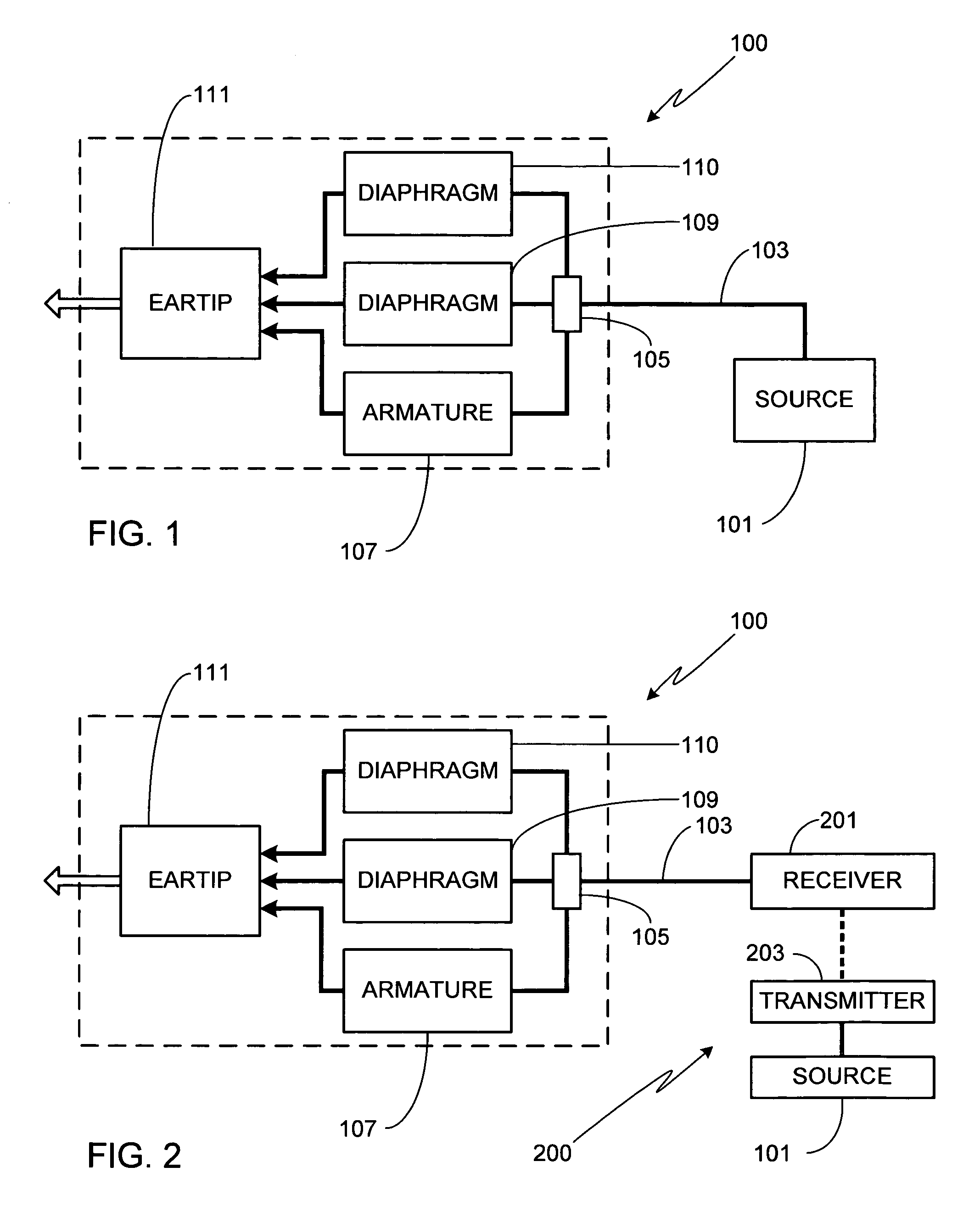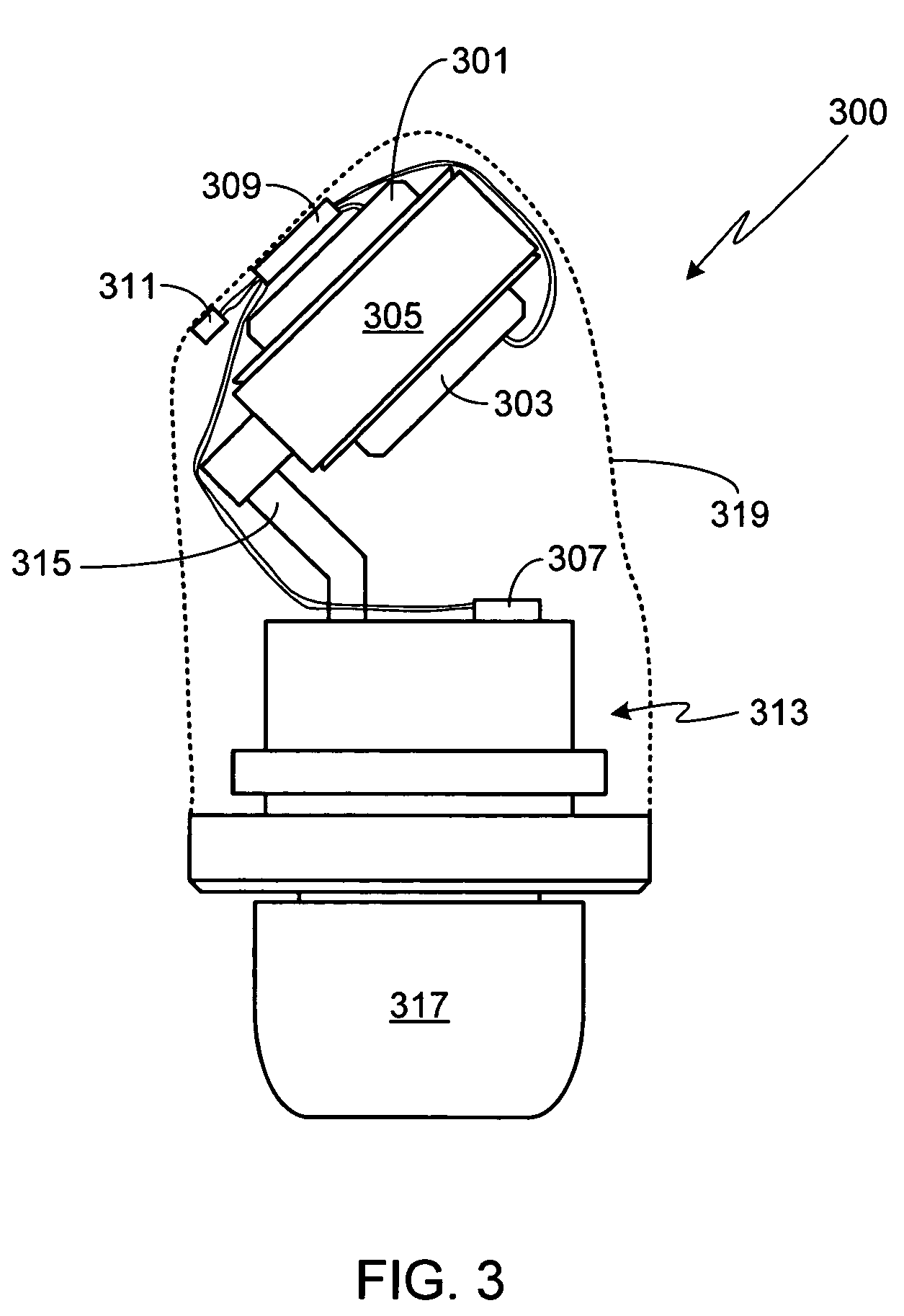In-ear monitor with hybrid dual diaphragm and single armature design
a dual diaphragm, in-ear monitor technology, applied in the field of audio monitors, can solve the problems of diaphragm receivers, affecting the fidelity of the sound, and the use of moving coil speakers, so as to improve the fidelity and reduce the cost
- Summary
- Abstract
- Description
- Claims
- Application Information
AI Technical Summary
Benefits of technology
Problems solved by technology
Method used
Image
Examples
Embodiment Construction
[0016]FIG. 1 is a block diagram of an in-ear monitor 100 in accordance with the invention. In this embodiment monitor 100 is coupled to source 101 via cable 103. Source 101 may be selected from any of a variety of sources such as an audio receiver, mixer, music player, headphone amplifier or other source type. The electrical signal from source 101 is feed through circuit 105 which provides input to armature driver 107 and a pair of diaphragm drivers 109 / 110, the electrical signal from source 101 representing the sound to be generated by in-ear monitor 100. The sounds produced by drivers 107, 109 and 110 are directed through an eartip 111 to the user.
[0017]FIG. 2 illustrates the use of in-ear monitor 100 with a wireless system. As shown, cable 103 is coupled to a receiver 201. Receiver 201 is wirelessly coupled to a transmitter 203 which is, in turn, coupled to source 101. If desired transmitter 203 and source 101 can be combined into a single device. It will be appreciated that in-e...
PUM
 Login to View More
Login to View More Abstract
Description
Claims
Application Information
 Login to View More
Login to View More - R&D
- Intellectual Property
- Life Sciences
- Materials
- Tech Scout
- Unparalleled Data Quality
- Higher Quality Content
- 60% Fewer Hallucinations
Browse by: Latest US Patents, China's latest patents, Technical Efficacy Thesaurus, Application Domain, Technology Topic, Popular Technical Reports.
© 2025 PatSnap. All rights reserved.Legal|Privacy policy|Modern Slavery Act Transparency Statement|Sitemap|About US| Contact US: help@patsnap.com



